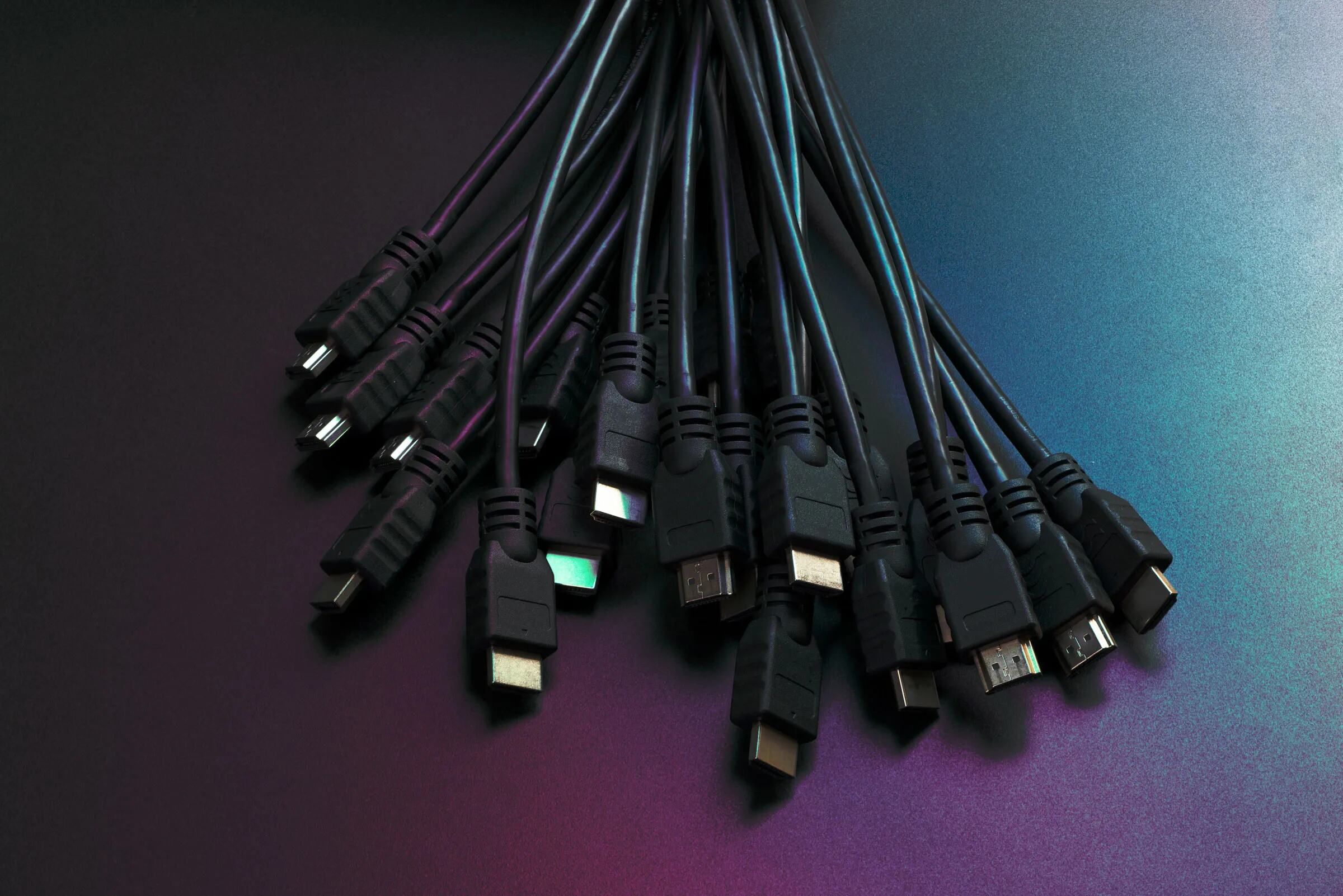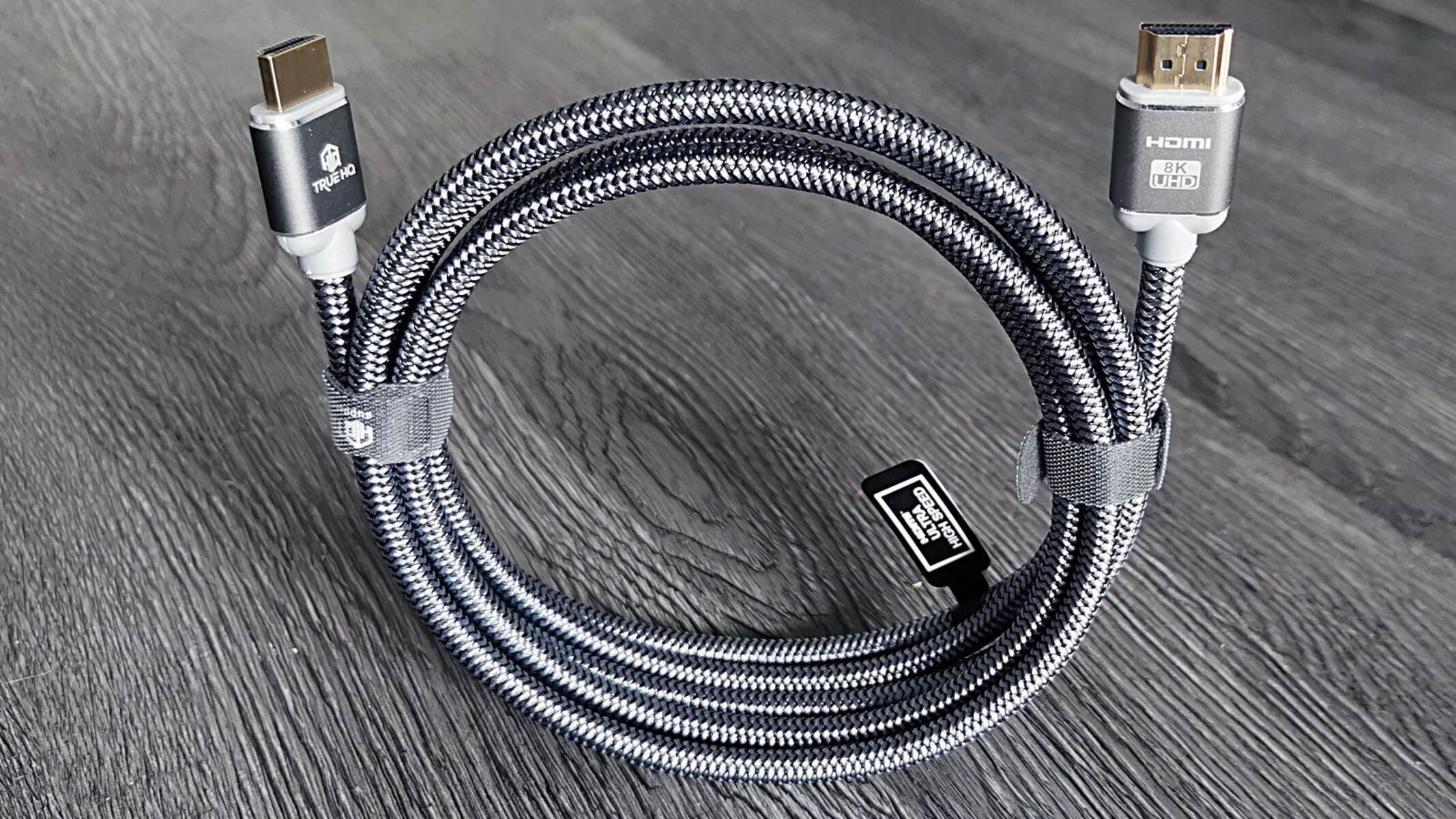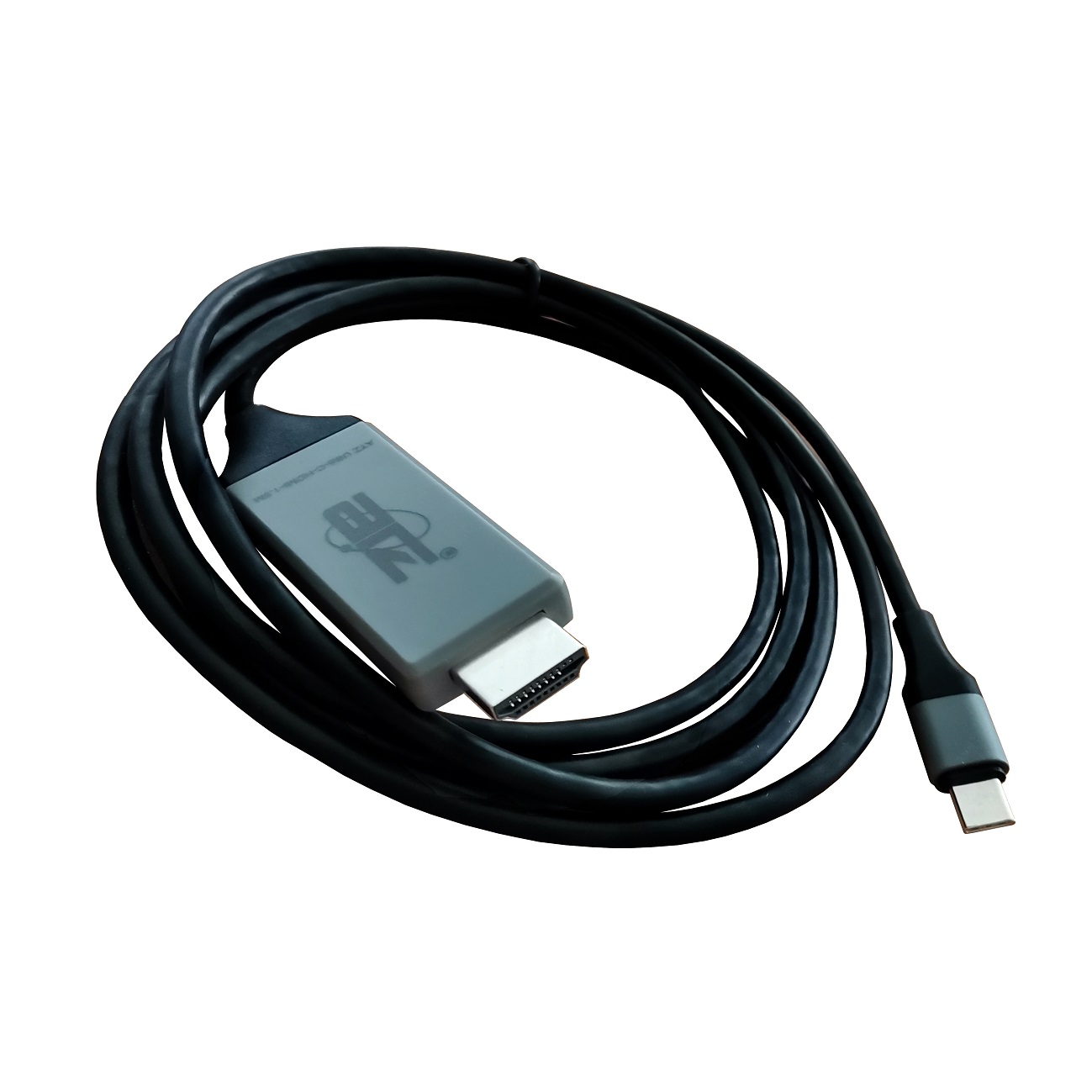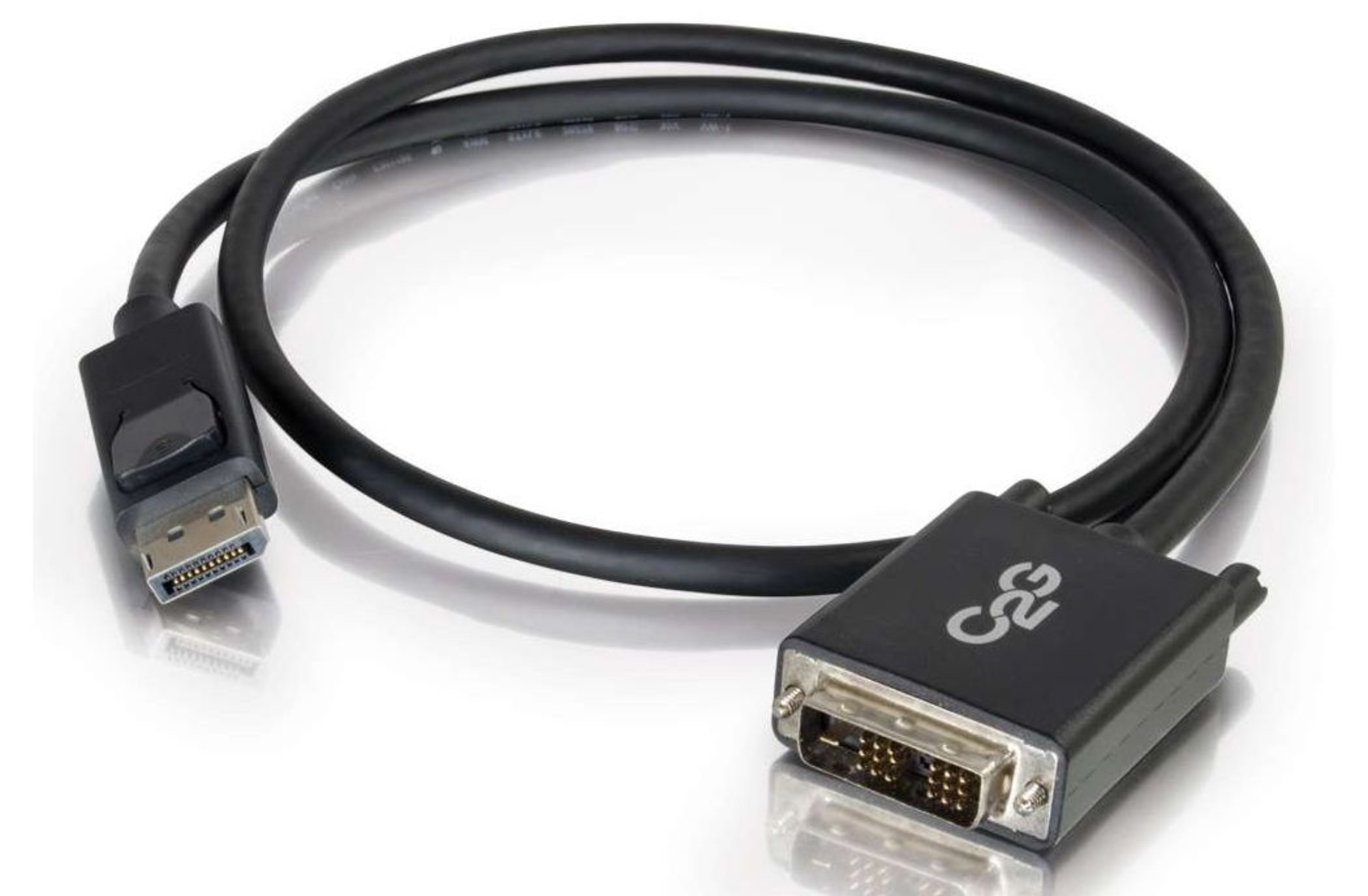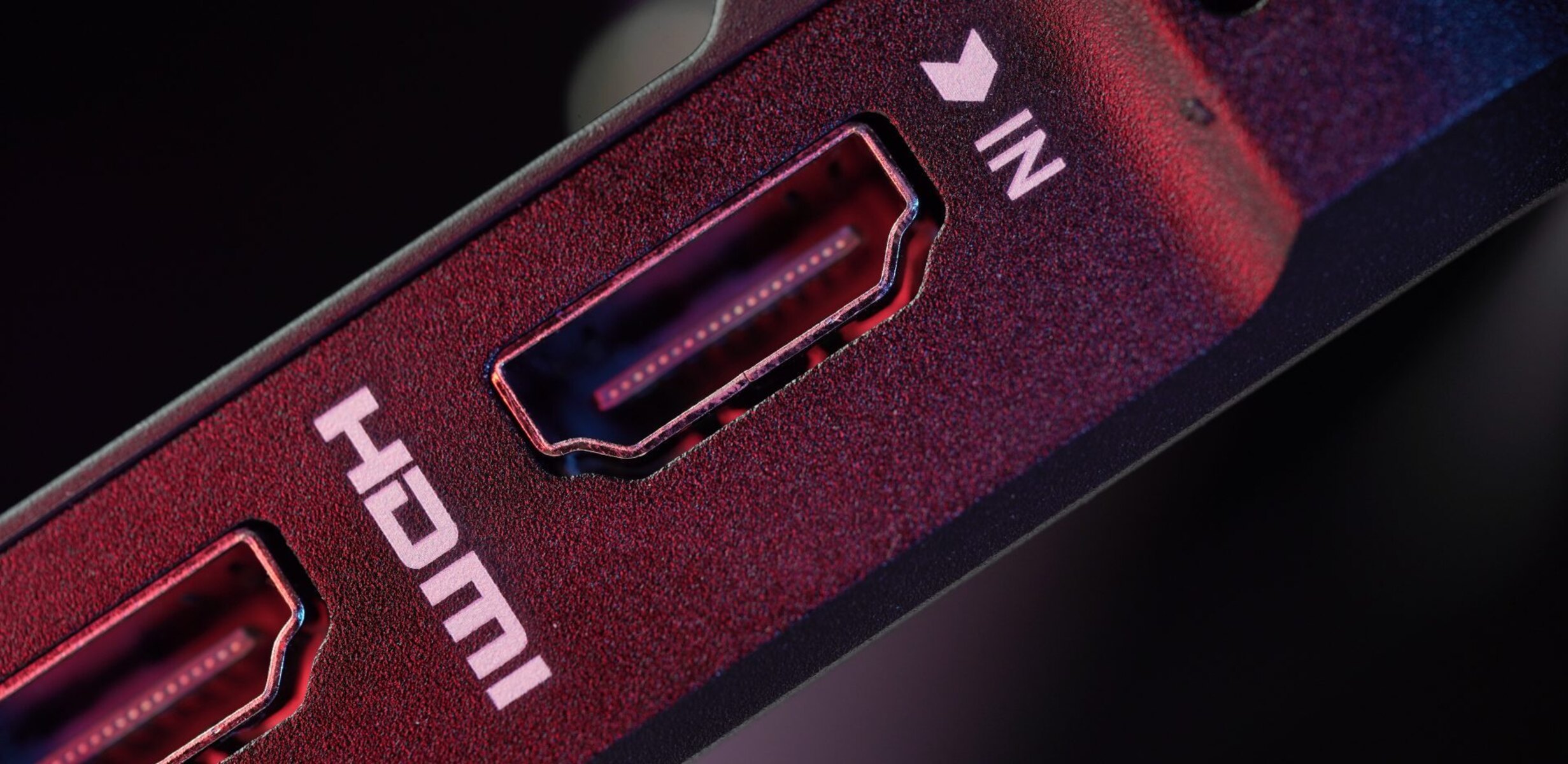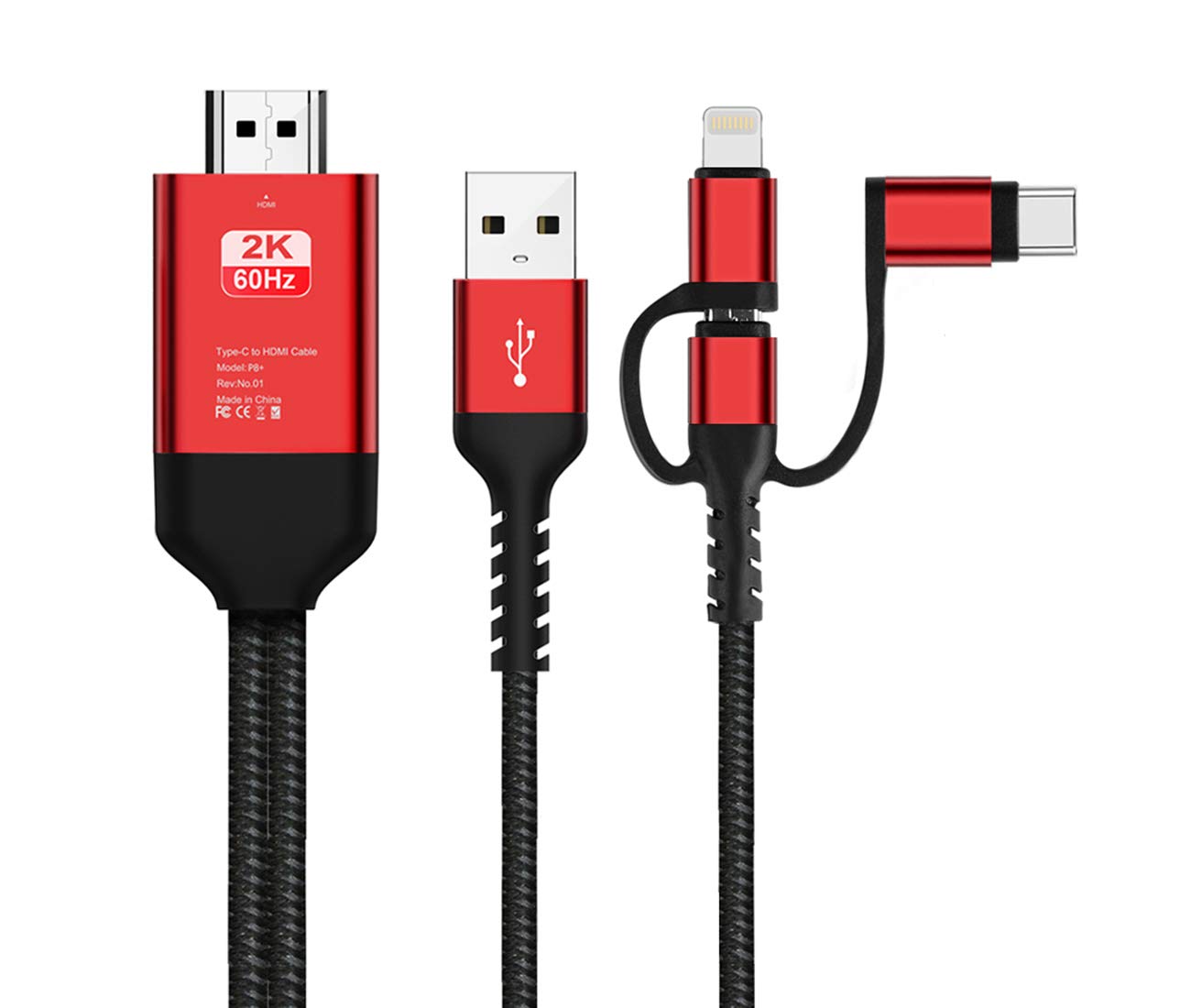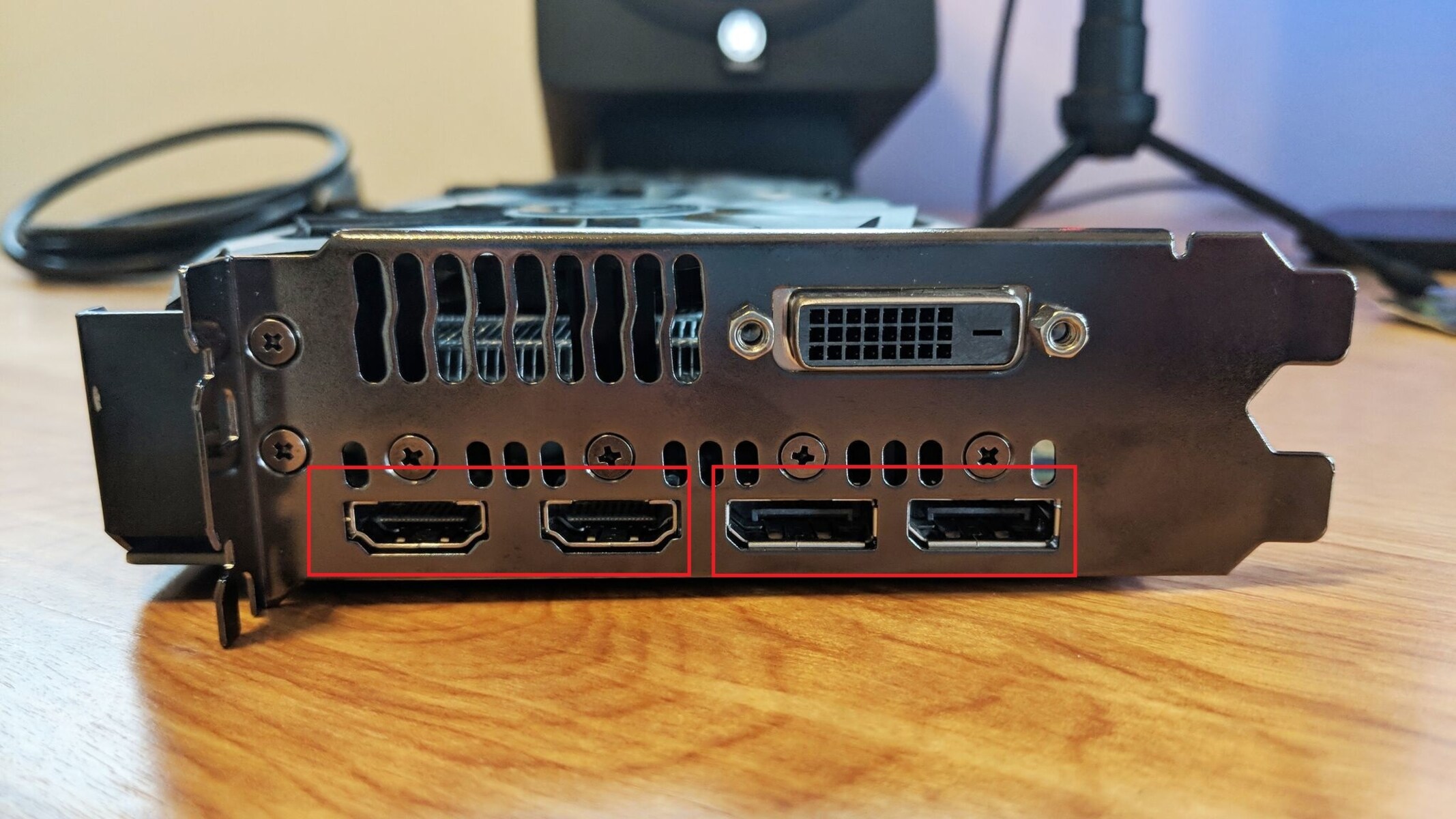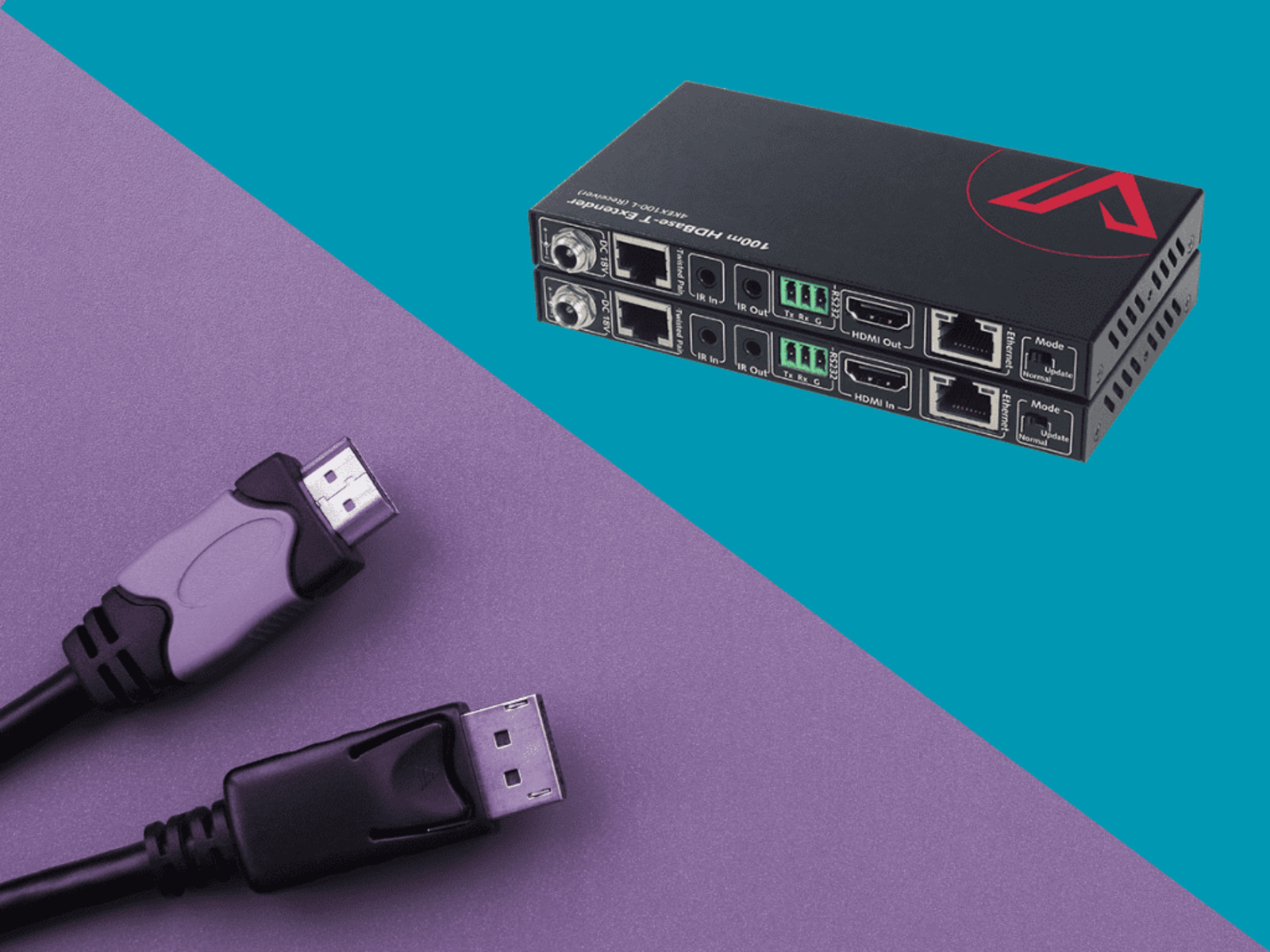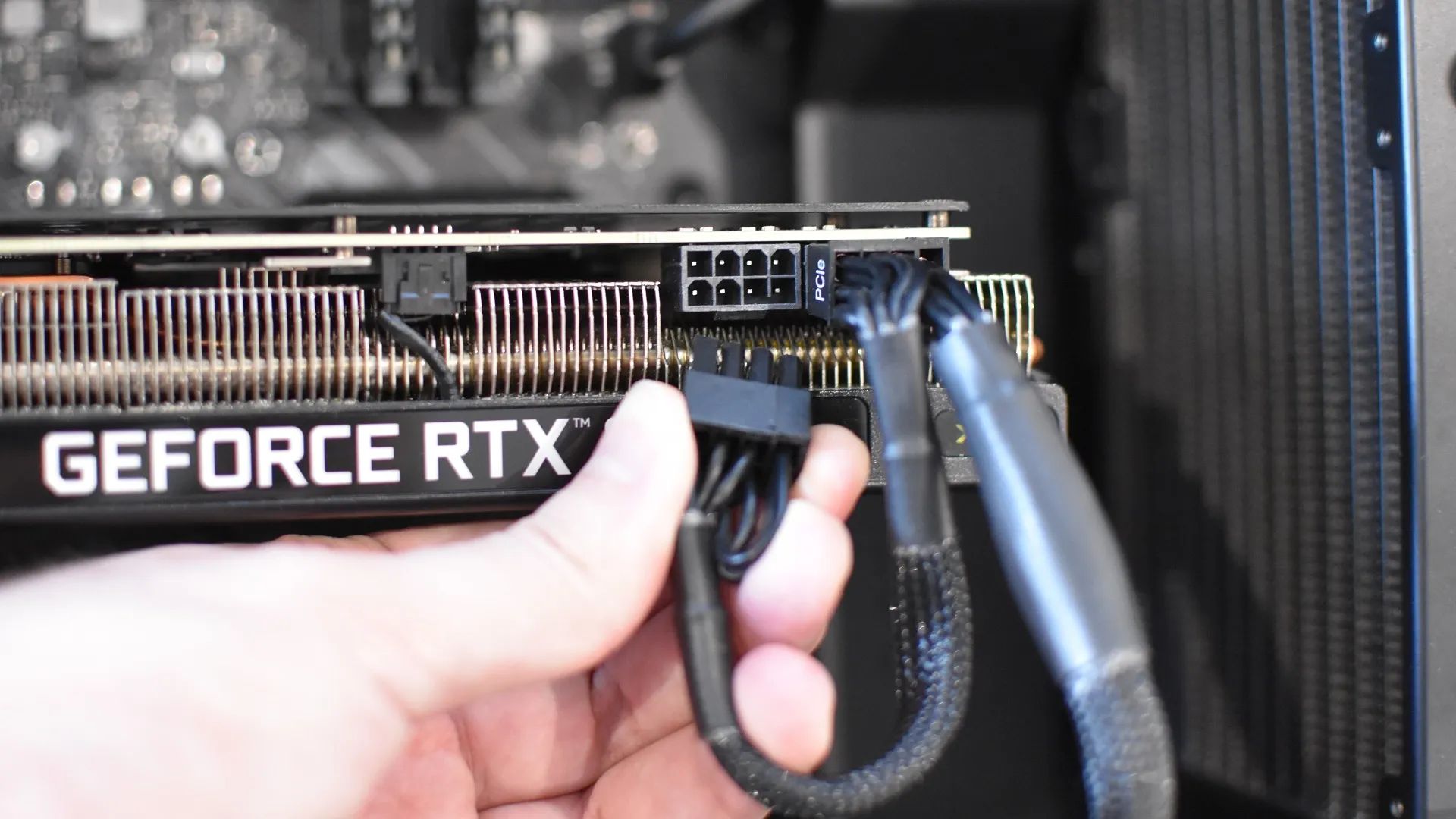Standard HDMI Cable
A standard HDMI cable is the most common type of HDMI cable available in the market. It is designed to transmit high-definition audio and video signals from your source device, such as a Blu-ray player or game console, to your display device, such as a TV or projector.
The standard HDMI cable supports resolutions up to 1080p, which is considered standard high-definition. It can handle the transmission of both audio and video signals in a single cable, eliminating the need for separate audio and video cables.
Standard HDMI cables are available in various lengths, ranging from a few inches to 50 feet or more. When selecting a standard HDMI cable, it is important to consider the length required for your setup to ensure optimal signal performance. Longer cables may introduce signal degradation, so it is recommended to use a shorter cable for shorter distances.
These cables are also compatible with older HDMI standards, such as HDMI 1.4 and earlier versions. However, they may not support some of the advanced features available in newer HDMI standards, such as 4K resolution, HDR (High Dynamic Range), or enhanced audio formats.
Standard HDMI cables are typically affordable and widely available, making them a popular choice for most home entertainment setups. They provide a reliable and cost-effective solution for connecting your devices and enjoying high-quality audio and video.
It’s important to note that while standard HDMI cables are sufficient for most home entertainment needs, if you are looking to take advantage of advanced features like 4K resolution or higher refresh rates, you may need to consider a higher-speed HDMI cable.
High-Speed HDMI Cable
A high-speed HDMI cable is an upgraded version of the standard HDMI cable. It is designed to support higher resolutions and refresh rates, making it ideal for devices that require more bandwidth for transmitting audio and video signals.
High-speed HDMI cables are capable of transmitting resolutions up to 4K, which offers four times the pixel density of standard high-definition. This means you can enjoy sharper, more detailed images on your 4K TV or monitor. These cables also support higher refresh rates, up to 120Hz, ensuring smooth and fluid motion during fast-paced action scenes or gaming.
In addition to higher resolutions and refresh rates, high-speed HDMI cables also support advanced features like HDR (High Dynamic Range), which enhances the color and contrast of the content for a more immersive viewing experience. They also enable the transmission of 3D content, offering a lifelike depth and dimension to compatible devices.
It’s important to note that not all high-speed HDMI cables are created equal. To ensure optimal performance, it is recommended to look for HDMI cables that are certified by HDMI Licensing LLC. These certified cables go through rigorous testing to meet the high standards set by HDMI.org and are labeled as “High-Speed HDMI with Ethernet” or “Premium High-Speed HDMI.”
High-speed HDMI cables are backward compatible with standard HDMI devices, so you can use them with older devices without any issues. However, if you want to take full advantage of the capabilities of your 4K TV or other high-resolution display, it’s recommended to use a high-speed HDMI cable.
When choosing a high-speed HDMI cable, consider the length required for your setup. Like standard HDMI cables, longer cables may introduce signal degradation. It’s also worth investing in cables with sturdy construction and proper shielding to minimize interference and ensure a reliable connection between your devices.
In summary, high-speed HDMI cables are designed to support higher resolutions, refresh rates, and advanced features like HDR and 3D. They are a must-have for those who want to enjoy the full potential of their high-definition displays.
Premium High-Speed HDMI Cable
The premium high-speed HDMI cable is the top-of-the-line option when it comes to HDMI cables. It offers the highest level of performance and is designed to meet the demanding requirements of advanced audio and video systems.
Premium high-speed HDMI cables are engineered to support the latest HDMI standards, including HDMI 2.0 and HDMI 2.1. These standards enable a range of advanced features, such as higher resolutions, increased refresh rates, dynamic HDR, and enhanced audio formats.
One of the key features of premium high-speed HDMI cables is their ability to transmit resolutions up to 8K. This means you can enjoy incredibly sharp and detailed visuals on your compatible 8K TV or monitor. These cables also support high refresh rates, up to 240Hz, ensuring ultra-smooth, lag-free gaming and action-packed scenes.
In addition to supporting higher resolutions and refresh rates, premium high-speed HDMI cables also offer enhanced HDR capabilities. They are designed to deliver deeper blacks, brighter whites, and a wider color gamut, providing a more vibrant and lifelike visual experience. These cables also support advanced HDR formats like Dolby Vision and HDR10+.
Another notable feature of premium high-speed HDMI cables is their support for eARC (Enhanced Audio Return Channel). With eARC, you can enjoy high-quality audio formats, including Dolby Atmos and DTS:X, for an immersive sound experience.
It’s important to mention that premium high-speed HDMI cables are backwards compatible with earlier HDMI versions, so you can use them with older devices without any issues. However, to fully utilize the capabilities of these cables, it is recommended to pair them with HDMI 2.1-compatible devices.
When choosing a premium high-speed HDMI cable, it’s essential to consider factors like cable length, quality of construction, and certification. Look for cables that are certified by HDMI Licensing LLC to ensure the highest level of performance and reliability.
In summary, premium high-speed HDMI cables are specifically designed to provide the best audio and video performance for advanced systems. They are the go-to choice for those seeking the highest resolutions, refresh rates, and advanced features available in the HDMI standard.
HDMI with Ethernet Cable
An HDMI with Ethernet cable, also known as HDMI-HEC (HDMI with Ethernet Channel), combines the capabilities of HDMI audio and video transmission with the added benefit of Ethernet connectivity.
The HDMI with Ethernet cable is designed to simplify the connectivity setup of your home theater system by allowing you to transmit both audio/video signals and internet data through a single cable. This eliminates the need for separate HDMI and Ethernet cables, reducing clutter and making installation more convenient.
With HDMI-HEC, you can connect your HDMI-enabled devices, such as smart TVs, streaming devices, and gaming consoles, to your home network. This enables internet-enabled features like online streaming, firmware updates, and network sharing directly through the HDMI cable.
It’s important to note that both the source and display devices need to support HDMI with Ethernet for this feature to work. If only one device is HDMI with Ethernet enabled, a standard HDMI cable can still be used for audio and video transmission, but a separate Ethernet cable will be required for internet connectivity.
HDMI with Ethernet cables are compatible with different HDMI versions, including HDMI 1.4 and HDMI 2.0. They support a wide range of resolutions, from 1080p to 4K, and higher refresh rates, making them suitable for high-definition and ultra-high-definition displays.
When selecting an HDMI with Ethernet cable, it’s important to consider factors such as cable length and build quality. Longer cables may result in signal degradation, so choose an appropriate length for your setup. Additionally, opt for cables with strong shielding and connectors to ensure reliable signal transmission and reduce interference.
In summary, HDMI with Ethernet cables provide a convenient solution for connecting your home theater devices to your network. They offer the versatility of transmitting audio, video, and internet data through a single cable, simplifying connectivity and reducing cable clutter.
Standard Automotive HDMI Cable
The standard automotive HDMI cable is specifically designed for use in vehicles, allowing you to connect HDMI-enabled devices to in-car entertainment systems and displays. These cables are engineered to withstand the unique challenges and requirements of automotive environments.
Standard automotive HDMI cables offer reliable audio and video connectivity for various applications within vehicles, such as connecting smartphones, tablets, gaming consoles, or portable media players to rear-seat entertainment systems or dash-mounted displays.
When it comes to automotive HDMI cables, durability and resilience are crucial. These cables are built to withstand the harsh conditions typically encountered in a vehicle, such as temperature fluctuations, vibrations, and potential exposure to moisture. They are often reinforced with extra shielding and durable connectors to ensure a secure connection and reliable signal transmission, even during bumpy rides.
Standard automotive HDMI cables typically support resolutions up to 1080p, enabling you to enjoy high-definition content on your in-car displays. They are also equipped with additional features like audio return channel (ARC), allowing for two-way audio transmission between devices and the car’s audio system.
It’s worth noting that automotive HDMI cables may have different form factors and connectors compared to the standard HDMI cables used in home entertainment systems. The connectors are specifically designed to fit into the available ports in vehicles, such as dash-mounted HDMI ports or ports located in the rear-seat entertainment system. Therefore, it is important to ensure compatibility with your specific vehicle’s setup before making a purchase.
When selecting a standard automotive HDMI cable, consider factors such as cable length and build quality. Depending on the position of your devices and displays in the vehicle, you may need a longer or shorter cable. Additionally, look for cables with sturdy construction, dependable connectors, and proper shielding to ensure optimal signal transmission and durability.
In summary, standard automotive HDMI cables offer a reliable and durable solution for connecting HDMI-enabled devices to in-car entertainment systems and displays. They are designed to withstand the unique challenges of automotive environments, providing a seamless audio and video experience for passengers during their travels.
High-Speed Automotive HDMI Cable
The high-speed automotive HDMI cable is an advanced option designed specifically for demanding automotive applications. It provides the highest level of performance and reliability for connecting HDMI-enabled devices to in-car entertainment systems and displays.
High-speed automotive HDMI cables are built to withstand the rigorous requirements of automotive environments, including extreme temperatures, vibrations, and potential electromagnetic interference (EMI). These cables are engineered with enhanced shielding and durable connectors to ensure a stable and uninterrupted audio/video transmission, even during challenging road conditions.
One of the key benefits of high-speed automotive HDMI cables is their capability to support high-quality audio and video formats. These cables are designed to transmit high resolutions, including 1080p or even 4K Ultra HD, delivering crystal-clear visuals on your in-car displays. They also support high refresh rates, ensuring smooth and fluid motion in videos and games.
Moreover, high-speed automotive HDMI cables offer additional features such as enhanced audio return channel (eARC), allowing for high-definition audio transmission between devices and the car’s audio system. This ensures an immersive and high-fidelity audio experience during your journeys.
These cables are also compatible with various HDMI versions, supporting the latest protocols and technologies. They can seamlessly integrate with advanced in-car systems, such as entertainment consoles, video streaming devices, or connected car platforms, enabling a wide range of multimedia options for both drivers and passengers.
When choosing a high-speed automotive HDMI cable, considering the cable length and quality is crucial. Depending on the location of your devices and displays within the vehicle, you may require a longer or shorter cable to establish optimal connections. It is additionally important to select a cable with reliable construction and solid connectors to ensure long-lasting performance and reduce the risk of signal loss or interference.
In summary, the high-speed automotive HDMI cable provides superior performance, durability, and compatibility for connecting HDMI-enabled devices to in-car entertainment systems. With its ability to support high resolutions and advanced audio features, it ensures an exceptional audio and video experience during your car journeys.
HDMI-Mini Cable
An HDMI-Mini cable is a smaller variant of the standard HDMI cable, designed specifically for devices with a Mini HDMI (HDMI Type C) port. This compact cable allows you to connect Mini HDMI-enabled devices, such as cameras, camcorders, or tablets, to larger displays, such as TVs or monitors.
The HDMI-Mini cable features a smaller connector on one end, which plugs into the Mini HDMI port of your device. The other end of the cable usually has a standard HDMI Type A connector, which connects to the HDMI port of your display. This allows you to enjoy high-definition video and audio playback on a larger screen.
While the size of the HDMI-Mini cable and connector may be smaller, it still supports the same audio and video transmission capabilities as the standard HDMI cable. It can handle high-definition resolutions up to 1080p, delivering sharp and clear visuals on your display.
It’s important to note that HDMI-Mini cables are not as commonly available as standard HDMI cables. However, they are readily available online or at electronics stores specializing in audiovisual accessories.
When choosing an HDMI-Mini cable, it’s important to consider the length required for your specific setup. Just like standard HDMI cables, longer cables may introduce signal degradation, so it’s recommended to use a shorter cable for shorter distances between your device and display.
Additionally, make sure to check the compatibility of your devices with HDMI-Mini connectors before purchasing the cable. While many cameras, camcorders, and tablets are equipped with Mini HDMI ports, not all devices support this connection type. Be sure to verify the type of HDMI port on your device to ensure compatibility with an HDMI-Mini cable.
In summary, an HDMI-Mini cable provides a compact and versatile solution for connecting Mini HDMI-enabled devices to larger displays. Its smaller form factor allows for easy connectivity, making it a convenient choice for capturing and sharing high-definition photos and videos on a larger screen.
HDMI-Micro Cable
An HDMI-Micro cable is a compact and specialized version of the standard HDMI cable, designed for devices with a Micro HDMI (HDMI Type D) port. This cable allows you to connect devices such as smartphones, tablets, or digital cameras to larger displays, such as TVs or monitors, for high-definition audio and video transmission.
The HDMI-Micro cable features a smaller connector on one end, which plugs into the Micro HDMI port of your device. The other end of the cable typically has a standard HDMI Type A connector that connects to the HDMI port of your display. This connection enables you to enjoy high-quality video playback on a larger screen.
Despite its smaller size, the HDMI-Micro cable supports the same audio and video transmission capabilities as the standard HDMI cable. It can handle high-definition resolutions up to 1080p, delivering crisp and clear visuals on your display.
It’s important to note that not all devices come with an HDMI-Micro port. While some smartphones, tablets, and digital cameras may be equipped with a Micro HDMI port, many modern devices have transitioned to other connection types, such as USB-C or wireless connectivity. Therefore, it is essential to check the port availability and compatibility of your device before purchasing an HDMI-Micro cable.
Just like other HDMI cables, the length of the HDMI-Micro cable is an important consideration. Longer cables may introduce signal degradation, so it’s recommended to choose a cable length appropriate for the distance between your device and display.
While HDMI-Micro cables may not be as widely available as standard HDMI cables, they can typically be found online or at electronics stores specializing in audiovisual equipment and accessories.
In summary, an HDMI-Micro cable provides a compact and efficient solution for connecting devices with Micro HDMI ports to larger displays. Its small form factor makes it convenient for sharing high-definition content from your smartphone, tablet, or digital camera on a bigger screen. However, always ensure compatibility with your device’s port and verify the need for an HDMI-Micro cable before making a purchase.
HDMI-D Cable
An HDMI-D cable is a specialized variant of the standard HDMI cable designed for devices with a Type D HDMI connector, also known as a Micro HDMI connector. This compact cable allows you to connect devices such as smartphones, tablets, or digital cameras with a Micro HDMI port to other devices, such as TVs or monitors, for high-definition audio and video transmission.
The HDMI-D cable features a smaller, Micro HDMI Type D connector on one end, which plugs into the Micro HDMI port of your device. The other end of the cable typically has a standard HDMI Type A connector, which connects to the HDMI port of your display. This connection enables you to enjoy high-quality audio and video playback on a larger screen.
While the HDMI-D cable is smaller in size, it still supports the same audio and video transmission capabilities as the standard HDMI cable. It can handle high-definition resolutions up to 1080p, delivering sharp and vibrant visuals on your display.
It’s important to note that not all devices include a Micro HDMI port. While some smartphones, tablets, and cameras may have a Micro HDMI port, many modern devices have transitioned to other connection types, such as USB-C or wireless connectivity. Therefore, it is essential to check your device’s port availability and compatibility before purchasing an HDMI-D cable.
The length of the HDMI-D cable is an important consideration, just like with other HDMI cables. Opt for a cable length that suits the distance between your device and display, keeping in mind that longer cables may introduce signal degradation.
While HDMI-D cables may not be as widely available as standard HDMI cables, they can generally be found online or at electronics stores specializing in audiovisual devices and accessories.
In summary, an HDMI-D cable provides a specialized solution for connecting devices with Micro HDMI ports to larger displays. Its smaller form factor makes it convenient for sharing high-definition content from your smartphone, tablet, or digital camera on a larger screen. However, always ensure compatibility with your device’s port and verify the need for an HDMI-D cable before making a purchase.
HDMI-A Cable
An HDMI-A cable is a standard HDMI cable that uses an HDMI Type A connector. It is the most common type of HDMI cable available and is designed to transmit high-definition audio and video signals between devices such as Blu-ray players, game consoles, and TVs or monitors.
The HDMI-A cable supports various resolutions, ranging from standard high-definition (1080p) to higher resolutions like 4K Ultra HD. It can transmit both audio and video signals in a single cable, eliminating the need for separate audio and video connections.
The HDMI-A cable utilizes a 19-pin Type A connector, which is a full-size rectangular connector commonly found on most devices. It provides a secure and reliable connection, ensuring that the audio and video signals are delivered without any loss or distortion.
When choosing an HDMI-A cable, it’s important to consider the length required for your setup. HDMI-A cables are available in a range of lengths, from a few feet to long-distance cables designed for professional installations. It’s recommended to choose a cable length that suits the distance between your devices without excess slack, as longer cables may introduce signal degradation.
HDMI-A cables are also backward compatible with older HDMI versions. This means you can use an HDMI-A cable with devices that have different HDMI versions, such as HDMI 1.4 or earlier. However, note that the cable itself doesn’t determine the capabilities or features supported by the device. The device’s HDMI version and specifications determine what features are available.
These cables are widely available and come in various price ranges. When selecting an HDMI-A cable, it’s important to ensure good quality construction and proper shielding to minimize interference and ensure stable signal transmission.
In summary, the HDMI-A cable is the standard HDMI cable that provides a reliable and convenient solution for connecting your devices and enjoying high-definition audio and video. Its full-size Type A connector and wide compatibility make it suitable for most home entertainment setups.







